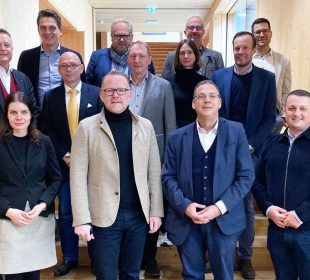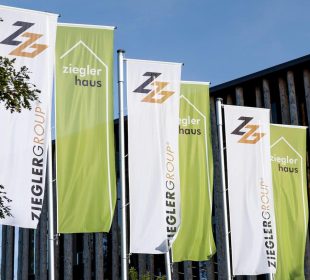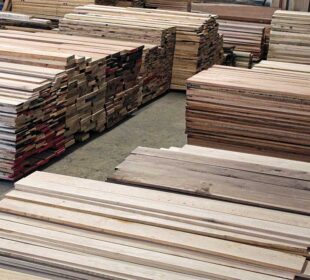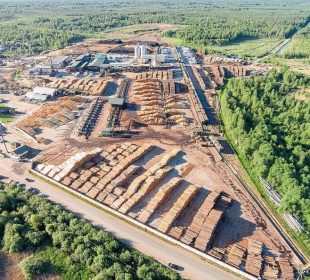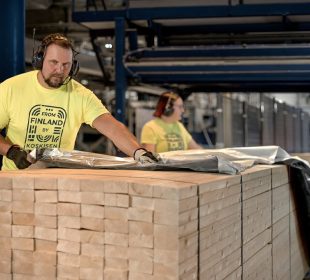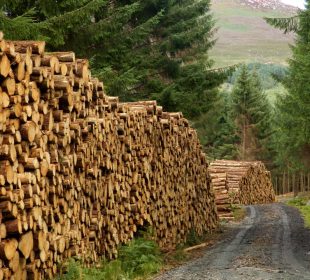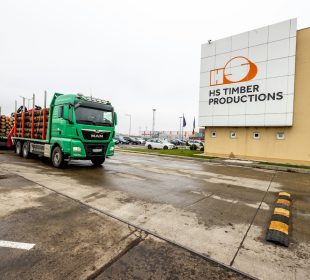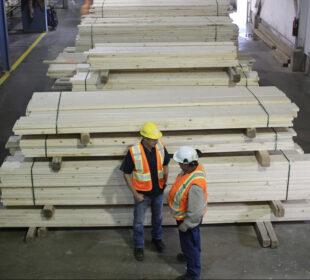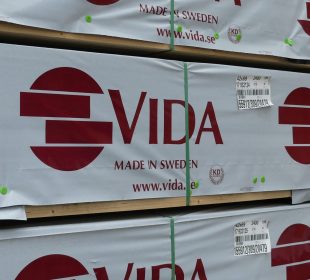In 2015, Austria’s wood processing companies were able to compensate for the previous year’s losses with a sales increase of 5.5 percent. Sales revenue increased to EUR 8.1 billion. The export success of the Austrian sawmill industry and the manufacturers of timber products made a significant contribution to sales growth in this regard, as shown by the latest sector report on wood processing, compiled by Bank Austria. In 2015, Austria's exports of sawn timber increased nominally by 5.1 percent and timber product exports rose by 4.4 percent, while the export of wood panels stagnated.
Despite sales increases, production capacity in the sector was not fully utilised, and in 2015 companies cut jobs for the third consecutive year as a result. The wood processing industry lost 700 jobs from a total of 28,000 (2.4 percent), including 600 in the manufacturing of wooden components – the largest single segment in the industry with 13,000 employees. The Austrian sawmill industry reduced its number of employees by 1.3 percent, to 8,800 jobs. Only the employment capacities of wood panel producers and at manufacturers of other wooden goods remained unchanged.
Housing construction set to increase demand for wood in 2016
“The wood processing industry can expect greater increases in demand in 2016. The growing demand for wood products is being driven by domestic investments in housing construction, as well as by the increase in new housing construction in key European markets. Germany, which is the destination of more than 30 percent of domestic timber exports, is the main driver. If only a portion of the building permits registered in Austria at the beginning of 2016 have been implemented in actual projects, new construction activity throughout the year is set to increase significantly, and not just with regard to multi-storey residential buildings,” sums up Bank Austria economist Günter Wolf.
In 2013 and 2014, an average of 63,000 new housing construction or housing renovation projects were approved in Austria each year; about as many as during the housing boom years in the mid-1990s. This figure was even higher in 2015.
Low innovation potential threatens competitiveness of Austrian wood processing industry
“The Austrian wood processing industry is competitive in many sectors, as evidenced by the more than two decades of almost continuous growth in timber export surpluses. Nevertheless, in 2015 a further increase of EUR 1.5 billion was recorded, which was attributable to the wood panel and timber sectors in roughly equal measure. These foreign trade successes were based on high productivity gains, made possible by restructuring measures, coupled with high capital expenditure – particularly in the growth-heavy new millennium,” explains Wolf.
Between 2004 and 2008, an average of a further EUR 400 million was invested in wood processing. In the last five years, however, investment spending has fallen to below EUR 200 million per year. At the same time, some productivity gains have been lost and it has been years since the external trade balance improved more than a little; the 2007 record is no longer achievable.
Last but not least, price pressure has increased in the highly processed wood products segment too (in particular parquet flooring and joinery).
“Essentially, wood processors are suffering because of their relatively narrow options to set prices. Processors are able to increase wood prices only with a considerable delay, or only occasionally when it comes to sales prices. For example, producer prices barely changed between 2011 and 2014, while log prices increased by more than 10 percent. This slow price development is attributable primarily to the highly competitive environment, but is also the result of the relatively low innovation potential of wood processors,” Wolf concludes.
Only 40 percent of wood processing plants in Austria are innovative in the sense of the EU Innovation Scoreboards. This is one of the lowest figures for all industry sectors, and is below the average result of the EU-15 for wood processing of 49 percent.
Encouraging, yet limited, growth prospects
In the long term, wood will grow both as an energy source and as a construction material, albeit at a slower pace. Relatively narrow limits have been set in particular for the further efficient expansion of the biomass fraction of energy generation in Austria, since additional timber production is becoming increasingly difficult in light of the high levels of wood utilisation. Since 1998, the share of timber constructions in Austria has increased from 25 percent to 43 percent with regard to the number of buildings, and to 48 percent in housing construction. This share is set to continue growing, at least gradually. Austria already consumes around 0.8 cubic metres of sawmill products and wood panels per resident; this is roughly the same as Finland and Sweden, the record holders for European consumption, and far more than the EU average of 0.3 cubic metres per inhabitant.
European wood processors benefit from the fact that there is still sufficient untapped demand potential in many countries. Even countries with relatively low wood consumption – in Western Europe these include the United Kingdom, Italy and Spain – will probably never catch up to the Austrian level, either because they have no significant wood reserves and/or no tradition of timber construction and no competitive timber industry.
Stronger consumption growth is still expected in Central and Eastern Europe, especially in countries with high wood reserves such as Romania and Russia. In other words, the expected demand for wood products in Austria will continue to be covered mainly from domestic production; in the long term, however, the industry will lose some of its export share as further production capacities are developing in countries with low consumption figures and large wood reserves.
In the Austrian sawmill industry, investments decreased in relation to gross value added from 25 percent in 2008 to 15 percent in 2013 – by comparison, in Romania, these fell from 83 percent to 52 percent over the same period.
Highlights of the Austrian sawmill industry in 2015:
- Economic recovery in 2015: industry sales rise nominally by 5.5 percent to EUR 8.1 billion
- However, capacity utilisation in 2015 was too low to stop employment reduction: number of jobs drops by 2.4 percent
- Increase in new housing construction results in greater demand for wood products in 2016
- Low innovation potential threatens competitiveness of Austrian wood processing industry
- Wood set to become an even more important raw material in the long term, but at a slower pace and with limited increases in consumption
[gravityform id="1" title="true" description="true"]
[gravityform id="2" title="true" description="true"]


